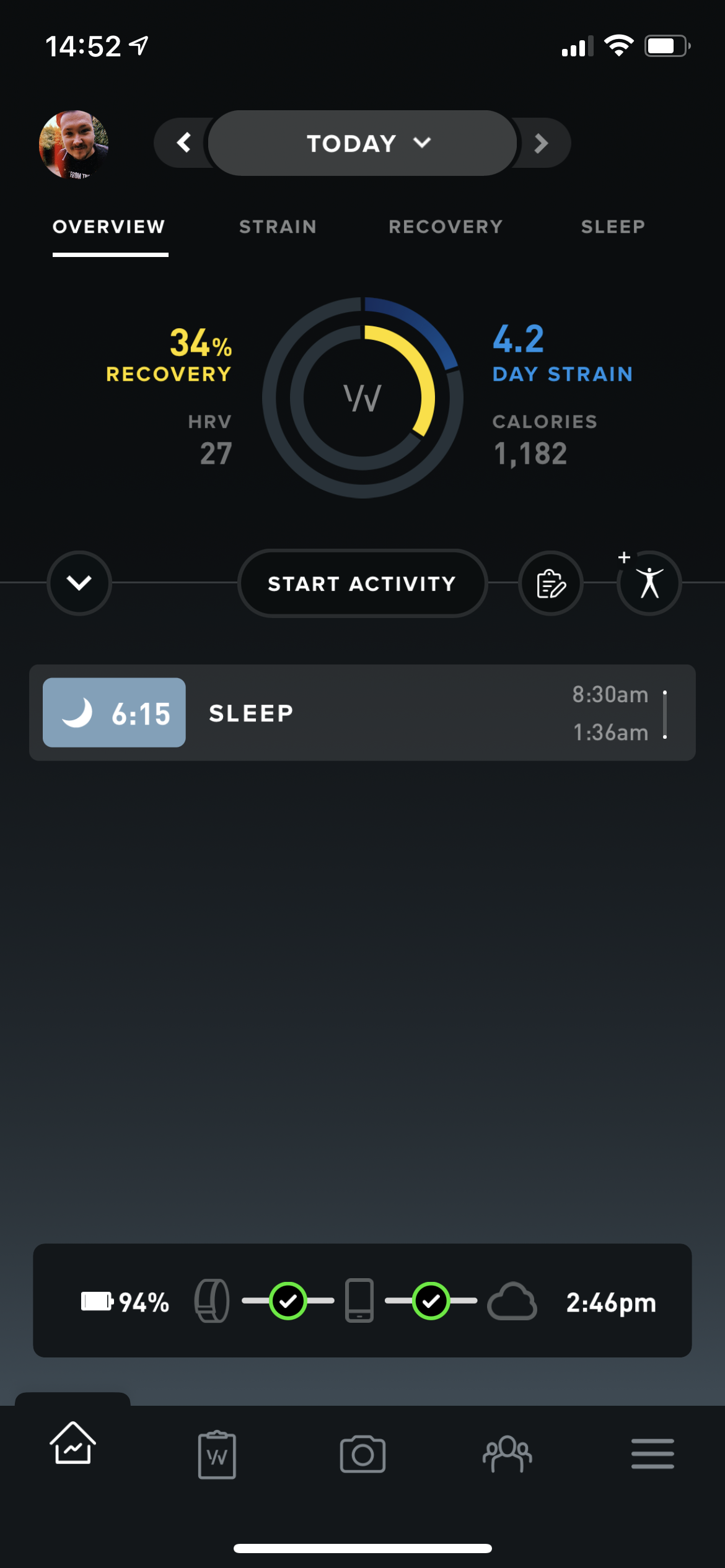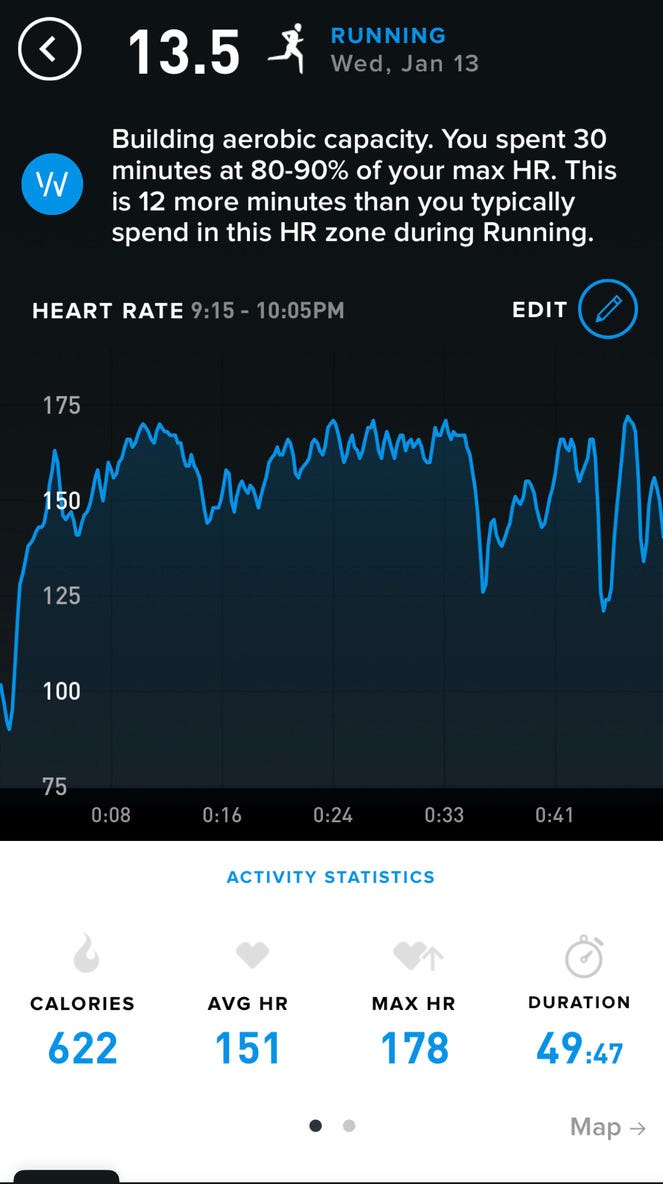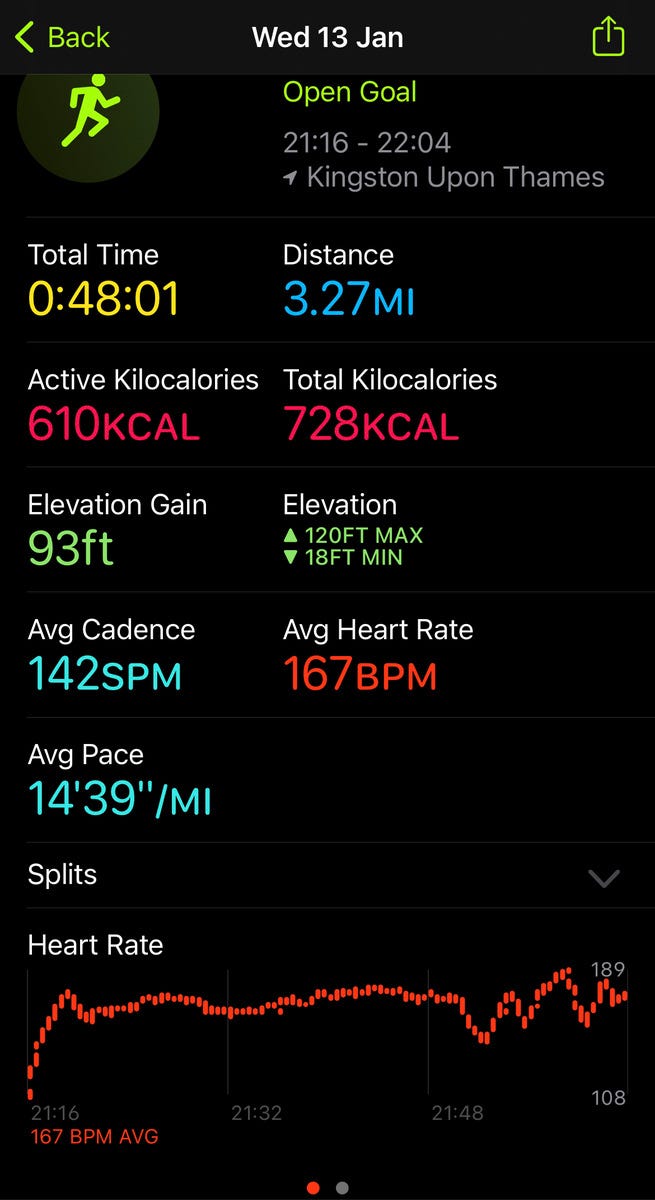Comprehensive Whoop Review: 6 Months In

I’ve been using Whoop for just over 6 months now and wanted to share some of my thoughts and experience so far. The main reason I bought a Whoop was because I was curious what I could learn, and whether the data could improve my life in a meaningful way.
What Is Whoop?
Whoop is a fitness tracker that has been designed to be worn 24/7. Their philosophy here is that you can’t accurately understand how your body is performing during work outs, and how it’s recovering after your workouts, unless you can track your activity 24/7.
Unlike other fitness trackers, Whoop requires a membership to continue using. I signed up for the 6 month membership fee where you pay £25 a month for 6 months minimum. They also have 12 and 18 month memberships that come with a lower monthly fee, but I just wanted to dip my toe in and see what I thought of WHOOP before deciding to commit any further. I think for a lot of people having to pay a monthly fee essentially forever for the device will be a major turn off. I can understand why people would feel that way.
Throughout the COVID pandemic, Whoop has done a lot of work with its data to help users spot that they have COVID before they even have symptoms.
The WHOOP Band
The Whoop strap itself is fairly inconspicuous. There’s no screen, and no vibration setting or anything at all really except for 3 very small lights on the side of the Whoop strap to let you know how much battery it has. As it’s designed to be worn 24/7, it has solid battery life often lasting 5 days for me before needing to be charged. It’s also completely waterproof — I’ve worn it in the shower and while I’ve had a bath, and while I’ve gotten drenched on a run and it’s never shown any problems. Since I first put my Whoop on I have never taken it off or suffered from any irritation, and I have sensitive skin. My Apple Watch bands usually give me a rash or dry skin. None of that with the Whoop band which is great!
Charging your Whoop is done while wearing it, which I think is a really clever way of handling it. A separate battery pack is slotted on top of the whoop and this then charges as you go about your day. I’ve never studied how quickly it charges, but I’m pretty sure it charges nearly to full charge within 30 or so minutes.
A couple of things to be aware of when it comes to the charging pack is that it’s firstly not waterproof so don’t wear it in the shower or anywhere else it can get wet. Secondly, and this may just be me, but the battery pack mounted on top of the Whoop itself makes it look like a tag a prisoner under house arrest wears. I do feel a little self conscious about the battery pack, so I avoid wearing it outside purely so people don’t think I’m a criminal.
The Whoop App
The Whoop experience has changed a little over the 6 months I had it. A lot of the reviews I read about it talked about how clunky the UI was, and it definitely was the first couple of months. They’ve made some solid improvements to this, but I still think it could be better personally.
When you first open the app you’re immediately presented with your Today view.

At the top you will see your profile picture, and below that you can see some options for Overview, Strain, Recovery and Sleep. We will come back to that shortly.
Recovery Score and your Day Strain. Along with that in grey you can see your HRV for the day along with Calories
Moving down you can see a button to start activity, along with two buttons to the right. The first one is your Diary, more on that later, and the second one is to manually add an activity.
Below these you will see your sleep, along with any activity you did on that day before right at the bottom seeing some information about your battery level and how recently it synchronised with the cloud.
Right at the bottom then you have your home button, then to the right a coaching button giving you a daily overview along with your Weekly and Monthly performance assessments. To the right of that there’s the Camera option, which gives you your whoop metrics in the camera view. I’ve never used this and would never want to use this, but other users seem to like it so whatever. Next to this you have groups you can join, great if you’re interested in that aspect, I’m personally not interested. Finally you then have your admin centre/options.
The reason people find the app confusing and/or clunky is because of the way the app is organised. There’s essentially two layers to the app — From the page we’re on we can either swipe right or swipe down.
If I swipe right, it will take me onto my Strain score for the day, swipe again and it’ll take me to my Recovery and swipe again and I’m on my Sleep Performance.
If I swipe down on any of those screens it will give me a week view of each of those metrics.
I found myself swiping around all over the place trying to find what I was looking for. Once you get used to it I find it makes sense, but initially it’s a little confusing.
Lets talk Strain & Recovery

Strain and Recovery are the two key metrics in Whoop. How exactly they’re both calculated is largely a mystery, but we do know there are a number of things that influence both of them.
Strain is calculated from how strenuous your workout is. This seems to be determined by your heart rate. The higher your heart rate and longer it is at that high rate, the more strain you will accumulate.
Recovery is combined by a number of metrics, but broadly is calculated from how long you’ve slept, your Heart Rate Variability (HRV), Resting Heart Rate and your Respiratory Rate. Of the 4 metrics my impression is that your HRV is the most influential in calculating your recovery score. There’s been a number of occasions where I have slept less than 5 hours, which is woefully low for me, but I have gotten a great recovery score. The reason as far as I understand for this is that Whoop calculates your HRV recovery score from your last 90 minutes of your sleep, and uses that as its baseline for calculating your recovery. You can manipulate this by manually adjusting your sleep which will gives you a completely different Recovery score.
I’ve seen some reviews online where they have compared their Whoop heart rate accuracy compared to a number of other heart rate trackers. Often they’re seeing wildly different results. From my experience comparing my Whoop to my Apple Watch they seem to be pretty close if not identical.


You can see both look pretty similar, and this is pretty par for the course for me. I spent a lot of the early days reviewing what WHOOP said versus my Apple Watch versus what Strava said and they’re all really really close. I’ve read a fair few people on Facebook having issues, specifically with interval training, and DCRainmakers review is also worth reading if you’re looking at WHOOP, but I haven’t had any issues with the data.
Some people online have reported better luck wearing the whoop on the bicep band, but I haven’t tried it. I considered picking one up to stop getting asked stupid questions like “why are you wearing two watched” (and after explaining why you cant help but feel like a weirdo…) but thanks to COVID I didn’t end up seeing people very often, and therefore stopped feeling self conscious about it.
For what it’s worth Whoop recommend wearing it on your non-dominant arm, which for most people is going to be their left hand. I’m left handed and wear it on my left arm as I have my Apple Watch on the right. Doesn’t seem to have made any noticeable impact on my data, but your milage may vary.
It’s also worth emphasising that I’ve never used the Recovery score as anything else than a guide. It can never replace how you truly feel and I don’t think you should base your training or activity solely on your Recovery score.
Weekly & Monthly Assessments
One of the key draws to Whoop for me was the ability to review my performance from previous weeks to understand how well I did, and where I could improve. The weekly and monthly assessments should be core to how I use Whoop.
The weekly assessment gives you an overview of your Strain and Recovery for the previous week. I usually just quickly scan this but don’t really find it useful.
The monthly assessment is much more interesting, especially if you’re using the Diary functionality, which is wholeheartedly recommend you do.
The diary lets you capture things you have done the previous day like how much coffee did you drink, how stressed did you feel, how much alcohol did you drink, did you read a book in bed, did you play on your phone in bed, did you have sex etc. By logging all of these things you build up a picture for the monthly assessment, which helps identify whether any of these things help you recover or impact your recovery.
I think the diary is key to tease out which behaviours you have are positively or negatively impacting your recovery. The only issue I find is that you can’t create custom things to track — Only what’s on their predefined list. This seems like a huge oversight to me and the only reason I can think of them wanting to do this is so that they can look at all the data for specific behaviours at a macro level, but this doesn’t help me as an individual user.
As much as I like the monthly assessment and how it presents the data, accessing it is so much more frustrating than it should be. when you’re a new user to Whoop you’re told you need to unlock 28 days worth of data before you can access it. Makes total sense. You get a countdown and the app really builds you up to finally being able to access the monthly assessment. You then hit your 28 days and…. nothing happens. Well, nothing happens if you started your membership any time after the first few days of the month as your Whoop needs 28 days worth of data in the same month. I started mid month, and because of that I had to wait another month before I could finally access my Monthly assessment.
It’s hard to overstate just how much this experience sucked. I was so excited to finally check out what 28 days worth of data could tell me, especially after how much the app built it up.
Another frustration I have with the monthly assessment is that you can’t view it within the app itself as it’s a pdf document. Therefore if you try to open your monthly assessment it sends you to your mobile browser and loads a non-mobile optimised pdf. The experience sucks.
There’s so much potential in the monthly assessment but the user experience is woeful at best. One of the more disappointing aspects of my time with Whoop.
Have I learnt anything about myself?
Not really. Whoop does a fairly decent job at presenting information to you, but they’re not presenting me with anything I couldn’t learn using my Apple Watch. At least with my Apple Watch I can access and export the data into another service if I want to, whereas with Whoop you can’t export that data.
I’ve found monitoring my respiratory rate interesting, as thats the key metric to help users understand whether they’ve caught covid. Whoop have done some interesting work in this area that’s worth taking a look at.
A Note on GDPR compliance
Back in August 2020, Will Ahmed, Whoop’s CEO, made some comments on twitter around Amazon Halo and how Whoop will never sell your data. This lead me to take a look at their privacy policy and also submit a GDPR request.
I submitted my GDPR request at the start September 2020, and followed up with them after a month asking when they will send my data. After ignoring me a couple of times, they then extended the period by a couple of months. I wasn’t desperate for the data so I was happy for them to take a bit more time if they needed it to produce it.
It’s now late November and I still haven’t heard anything after following up with them. They then start making excuses about why they hadn’t gotten it done, but claimed they would escalate it.
At this point in mid December I explain to them I am raising this with the ICO and want a full refund of my membership and my data purged from the system. A few days later just after Christmas I receive all my Whoop data shared via Google Drive, and they offer to refund my membership so far which I accept.
Their explanation for why it took so long is because their systems they had couldn't extract the data in an easy way. Looking at the quantity of data they were holding on me, I completely believe them. The data is in-depth — For example every single heart rate measurement is captured in those files. Seemingly it captures my heart rate thousands of times per day. There’s a lot of data here, and at some point i will interrogate it in a bit more detail.
Hopefully they have managed to innovate on this area to the point where extracting this data is fairly straight forward. However I would say it would just make more sense if they allowed users to just extract their data themselves. If you’re interested in Whoop and you’re a data conscious person, this is something to just be aware of.
Conclusion
if you’ve made it this far, you either skipped to the end or you’re really interested in getting a whoop. All in all I would say my experience with Whoop has been mixed. While Whoop hasn’t changed my life or made any significant differences to my life, I also admit I probably haven’t used it in a way that I get the best out of it. I’m not actively reviewing and analysing the data, nor am I making decisions based on this data. I’m also not training particularly hard for anything specifically either. I go for a run once or twice a week, and a few walks. Hardly the makings of an athlete.
If you’re someone who is actively training towards something, and is committed to measuring your performance and making improvements based on those data points then you may find Whoop has a lot to offer.
I would say if you’re someone who want’s a fitness tracker that’s low key and you’re not into the Apple Watch or Fitbit I think Whoop could play a role in your life too.
Personally I think there’s a lot of quality of life improvements they could make to their app that would go a long way to making it more enjoyable, along with allowing users to extract their own data (or integrating with Apple Health). I wish they would focus on this rather than chasing athlete and corporate sponsorships.
I also find their membership model to be questionable. Am I supposed to pay £25 a month for the rest of my life? Am I really getting £25 worth of value out of my Whoop per month? The answer for me is no.
I’ve enjoyed my time with Whoop, but for me I think this is the end of the road.